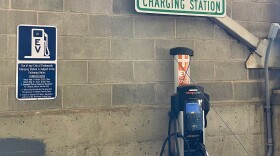Both Tesla and Volvo recently announced new innovations in electric car design, as more automobile companies augment their cars with increased fuel-efficiency, battery capacity, and hybrid technology. These new cars also bring new infrastructure, including home-charging stations and electric car ports in parking lots and at businesses. We'll talk about what you should know about investing in an electric car, and how they impact both the environment and the future of driving.
GUESTS:
- Jamie Page Deaton - Managing editor for U.S. News and World Report's "Best Car" rankings.
- Rebecca Ohler - Administrator at the N.H. Department of Environmental Services, where she oversees programs on energy, and climate change.
- Dan Scully - Architect, and member of the E-Team, which developed a program for creating electric vehicle infrastructure in the 90s. Scully also helped students at ConVal High School design a solar-powered vehicle that won the Tour de Sol.
What is an electric car?
Jamie Page Deaton:
They range from basically 'electrified' to 'fully electric.' When you're starting at the more traditional end of the range, you're talking about electrified cars. And these are cars which we used to call 'mild hybrids'...the car will shut down at stoplights when you're in traffic, but you still have electric power for your air conditioner, your radio, that sort of thing.
The next step up is hybrid cars. These are cars that have both a gasoline engine and a battery pack. Some of them can run for short distances at slow speeds on electric power alone...and those are really good if you do a lot of city driving.
[Hybrids] are cars that have a longer electric-only range. Generally speaking, they're between 20 to 50 miles or so. You can plug them in at night and charge them, and then when you run out of charge, the gasoline engine kicks in.
The actual electric car...run[s] purely on battery power. You plug it in to charge it up either at home or using a charging station.
Are electric cars truly "emissions-free?"
Rebecca Ohler:
Well nothing is truly emissions-free. But if you're looking at just what's coming out of a tailpipe, a battery-electric vehicle doesn't have a tailpipe...However, you do need to factor in the emissions that come from generating the electricity by which it is powered to begin with. When you take that into consideration, it is still far, far less emissions than a conventional gasoline or a diesel vehicle.
What about long-distance travel? Do electric cars have a good range with a single charge?
Dan Scully:
I know [someone] who runs a Tesla who has talked about never having run out. He's on his second Tesla...You develop the pattern just as you know where all of the next gas stations are. It will become more common.







